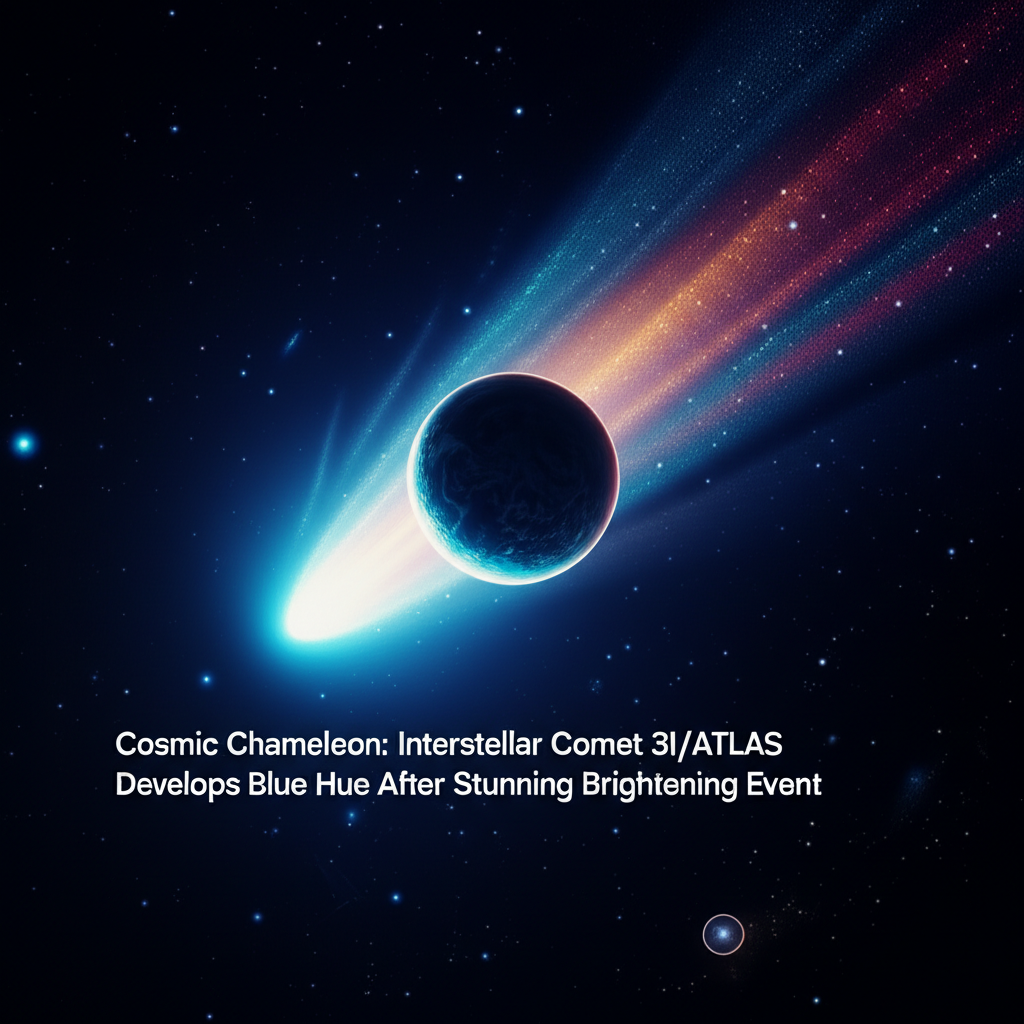A Cosmic Spectacle: Interstellar Comet 3I/ATLAS Turns Blue and Brightens Mysteriously
A comet from another star system is putting on an unexpected show, offering scientists a rare glimpse into the dynamics of interstellar objects.

Image source: Unsplash (Photo by Mehebub Alam on Unsplash)
🌠 Introducing Comet 3I/ATLAS: A Visitor from Beyond
Comet 3I/ATLAS holds a special distinction: it's only the third known interstellar object to visit our solar system. Unlike typical comets that originate from the Kuiper Belt or Oort Cloud, 3I/ATLAS journeyed from another star system, flung into the vastness of space by the gravitational embrace of another star. Its designation '3I' literally means 'third interstellar object,' following 'Oumuamua and 2I/Borisov. Each visit by these celestial wanderers offers a unique opportunity to study material that formed under different stellar conditions, providing invaluable insights into other planetary systems.
These objects are essentially time capsules, carrying pristine material from their home systems. Studying their composition and behavior as they interact with our Sun's heat and radiation can reveal secrets about planetary formation far, far away. This particular interstellar comet has already proven to be exceptionally dynamic.

Image source: Unsplash (Photo by Mehebub Alam on Unsplash)
💡 The Dramatic Brightening Event
Astronomers were recently surprised by an unexpected brightening event from 3I/ATLAS. What makes this even more intriguing is that the comet was largely hidden behind the Sun during this period, making direct observation challenging. Yet, new data and observations reveal a rapid increase in its luminosity. Such sudden brightening in comets typically indicates a significant release of gas and dust – a process known as outgassing – often triggered by the Sun's increasing heat as the comet nears our star.
This isn't just a minor fluctuation; the change was dramatic enough to catch the attention of the scientific community. It suggests that deep within the comet's icy nucleus, volatile materials are being rapidly exposed and vaporized, creating a larger, brighter coma of gas and dust. This kind of explosive activity is fascinating for cometary science, especially for an object originating from outside our solar system.

Image source: Unsplash (Photo by Mehebub Alam on Unsplash)
🔵 The Mystery of the Blueish Hue
Adding to the intrigue, new observations hint that 3I/ATLAS may be developing a distinct blueish hue. In cometary science, a blue color is often attributed to the presence of diatomic carbon (C2) molecules, which fluoresce blue when energized by sunlight. This suggests that the comet's rapid outgassing event is releasing significant amounts of carbon-rich compounds.
This coloration can be a valuable indicator of the comet's chemical composition, offering clues about the environment in which it formed in its distant home star system. Is it richer in certain volatiles compared to comets from our own solar system? The data analysis is ongoing, but the potential for a strikingly blue comet adds another layer of excitement to its observation.
🔭 What These Events Tell Us About Interstellar Objects
The combined observation of rapid brightening and a potential blue hue is scientifically significant. It confirms that interstellar objects can exhibit dynamic behavior similar to, or perhaps even more extreme than, our native comets. Furthermore, the news indicates that this is the third time scientists have ever witnessed an interstellar object undergoing such a rapid disintegration or significant change, making 3I/ATLAS a crucial case study.
These observations help scientists to refine models of how stars and planetary systems evolve, and how materials are exchanged between them. It hints at the diversity of compositions and structures among celestial objects originating from different cosmic nurseries. The sheer energy released during the brightening event also provides data points for understanding the stability and internal structure of these alien visitors.
The Universe Awaits More Discoveries!
What are your predictions for what we'll learn next from Comet 3I/ATLAS? Share your thoughts below!





